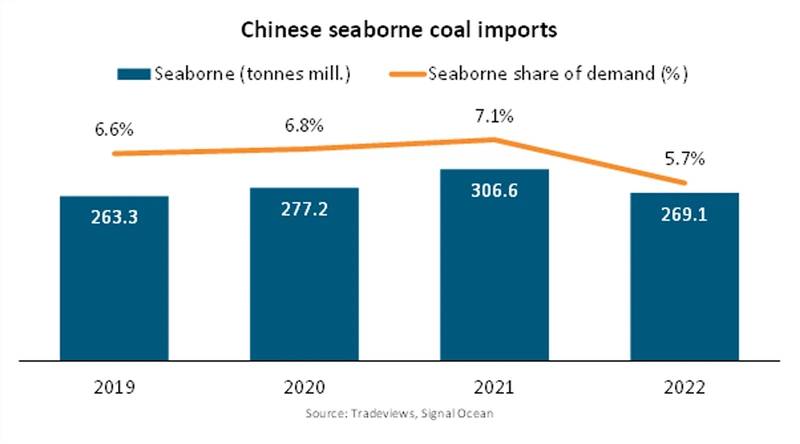Chinese Inbound Coal Shipments Plummet 12.2%, Says BIMCO
Weak economic activity, a 10.5% increase in domestic coal mining, and a recovery in coal imports from Mongolia via rail alleviated coal shipments to China in 2022. However, the end of China’s zero Covid policy and an anticipated recovery of the Chinese economy have strengthened expectations for the country’s coal imports in 2023. A return of import tariffs, the end of China’s unofficial ban on Australian coal, and the energy transition in China could shape the coal shipment outlook.
Coal shipments fell 12.2% in 2022, weakening in the first half of the year and partially recovering during the second half. Import demand recovered primarily during periods of higher energy demand, such as during an August heatwave, and as utilities built up inventories in the fourth quarter for the winter. Coking coal shipments remained more stable throughout the year, falling only 6.5%.

“An increase in economic activity in China following the relaxation of Covid restrictions could boost coal import demand in 2023. Coal still accounts for roughly 60% of China’s electricity production, and it remains an affordable alternative to LNG for cost-sensitive consumers. Additionally, if China’s recovery brings stability to the real estate sector, steel demand, and consequently coking coal demand, could increase,” says Filipe Gouveia, Shipping Analyst at BIMCO.
China’s decision to soften its ban on Australian coal could increase average sailing distances for Chinese coal imports. However, this policy was paired with a return of coal import tariffs from April 2023 onwards; 3% for coking coal and 6% for thermal coal, as well as a continued effort to increase output from Chinese coal mines. This will limit gains in coal shipments as the tariffs will help ensure that domestic coal remains more affordable than imports.
“2023 could be the last positive year for coal shipments to China before they begin to decline. On top of higher coal mining, China’s targets to reach peak coal consumption in 2026 and to generate a third of its electricity from renewables by 2025 will limit thermal coal demand moving onwards,” says Gouveia.
The International Energy Agency (IEA) foresees that the global thermal coal trade could already fall 10% by 2025 due to increased mining in China and the energy transition in Europe. Coking coal trade could on the other hand still rise 6% until 2025, due to a higher difficulty in substituting the commodity.
Related News

